| Rajput | |
|---|---|
 An 1876 engraving of the Rajputs of Rajputana, from the Illustrated London News | |
| Religions | Hinduism, Islam and Sikhism |
| Languages | Hindi, Haryanvi, Punjabi, Bhojpuri, Urdu, Gujarati, Maithili, Marwari, Sindhi and Bengali |
| Region | Uttar Pradesh, Punjab, Rajasthan, Gujarat, Himachal Pradesh, Haryana, Jammu and Kashmir, Azad Kashmir, Bihar, West Bengal, Sindh |
Rajput (from Sanskrit raja-putra, "son of a king") is a large multi-component cluster of castes, kin bodies, and local groups, sharing social status and ideology of genealogical descent originating from the Indian subcontinent. The term Rajput covers various patrilineal clans historically associated with warriorhood: several clans claim Rajput status, although not all claims are universally accepted.
The term "Rajput" acquired its present meaning only in the 16th century, although it is also anachronistically used to describe the earlier lineages that emerged in northern India from 6th century onwards. In the 11th century, the term "rajaputra" appeared as a non-hereditary designation for royal officials. Gradually, the Rajputs emerged as a social class comprising people from a variety of ethnic and geographical backgrounds. During the 16th and 17th centuries, the membership of this class became largely hereditary, although new claims to Rajput status continued to be made in the later centuries. Several Rajput-ruled kingdoms played a significant role in many regions of central and northern India until the 20th century.
The Rajput population and the former Rajput states are found in north, west and central India. These areas include Rajasthan, Gujarat, Uttar Pradesh, Himachal Pradesh, Haryana, Jammu, Punjab, Uttarakhand, Madhya Pradesh, West Bengal and Bihar. In Pakistan they are found on the eastern parts of the country, Punjab and Sindh.
Contents
History
Origins
The origin of the Rajputs has been a much-debated topic among the historians. Colonial-era writers characterised them as descendants of the foreign invaders such as the Scythians or the Hunas, and believed that the Agnikula myth was invented to conceal their foreign origin. According to this theory, the Rajputs originated when these invaders were assimilated into the Kshatriya category during the 6th or 7th century, following the collapse of the Gupta Empire. While many of these colonial writers propagated this foreign-origin theory in order to legitimise the colonial rule, the theory was also supported by some Indian scholars, such as D. R. Bhandarkar. The Indian nationalist historians, such as C. V. Vaidya, believed the Rajputs to be descendants of the ancient Vedic Aryan Kshatriyas. A third group of historians, which includes Jai Narayan Asopa, theorized that the Rajputs were Brahmins who became rulers.
However, recent research suggests that the Rajputs came from a variety of ethnic and geographical backgrounds. The root word "rajaputra" (literally "son of a king") first appears as a designation for royal officials in the 11th century Sanskrit inscriptions. According to some scholars, it was reserved for the immediate relatives of a king; others believe that it was used by a larger group of high-ranking men. Over time, the derivative term "Rajput" came to denote a hereditary political status, which was not necessarily very high: the term could denote a wide range of rank-holders, from an actual son of a king to the lowest-ranked landholder. Before the 15th century, the term "Rajput" was associated with people of mixed-caste origin, and was therefore considered inferior in rank to "Kshatriya".
Gradually, the term Rajput came to denote a social class, which was formed when the various tribal and nomadic groups became landed aristocrats, and transformed into the ruling class. These groups assumed the title "Rajput" as part of their claim to higher social positions and ranks. The early medieval literature suggests that this newly formed Rajput class comprised people from multiple castes. Thus, the Rajput identity is not the result of a shared ancestry. Rather, it emerged when different social groups of medieval India sought to legitimize their newly acquired political power by claiming Kshatriya status. These groups started identifying as Rajput at different times, in different ways.
Emergence as a community
Scholarly opinions differ on when the term Rajput acquired hereditary connotations and came to denote a clan-based community. Historian Brajadulal Chattopadhyaya, based on his analysis of inscriptions (primarily from Rajasthan), believed that by the 12th century, the term "rajaputra" was associated with fortified settlements, kin-based landholding, and other features that later became indicative of the Rajput status. According to Chattopadhyaya, the title acquired "an element of heredity" from c. 1300. A later study by of 11th-14th century inscriptions from western and central India, by Michael B. Bednar, concludes that the designations such as "rajaputra", "thakkura" and "rauta" were not necessarily hereditary during this period.
During its formative stages, the Rajput class was quite assimilative and absorbed people from a wide range of lineages. However, by the late 16th century, it had become genealogically rigid, based on the ideas of blood purity. The membership of the Rajput class was now largely inherited rather than acquired through military achievements. A major factor behind this development was the consolidation of the Mughal Empire, whose rulers had great interest in genealogy. As the various Rajput chiefs became Mughal feduatories, they no longer engaged in major conflicts with each other. This decreased the possibility of achieving prestige through military action, and made hereditary prestige more important.
The word "Rajput" thus acquired its present-day meaning in the 16th century. During 16th and 17th centuries, the Rajput rulers and their bards (charans) sought to legitimize the Rajput socio-political status on the basis of descent and kinship. They fabricated genealogies linking the Rajput families to the ancient dynasties, and associated them with myths of origins that established their Kshatriya status. This led to the emergence of what Indologist Dirk Kolff calls the "Rajput Great Tradition", which accepted only hereditary claims to the Rajput identity, and fostered a notion of eliteness and exclusivity. The legendary epic poem Prithviraj Raso, which depicts warriors from several different Rajput clans as associates of Prithviraj Chauhan, fostered a sense of unity among these clans. The text thus contributed to the consolidation of the Rajput identity by offering these clans a shared history.
Despite these developments, migrant soldiers made new claims to the Rajput status until as late as the 19th century. In the 19th century, the colonial administrators of India re-imagined the Rajputs as similar to the Anglo-Saxon knights. They compiled the Rajput genealogies in the process of settling land disputes, surveying castes and tribes, and writing history. These genealogies became the basis of distinguishing between the "genuine" and the "spurious" Rajput clans.
Rajput kingdoms
The Rajput kingdoms were disparate: loyalty to a clan was more important than allegiance to the wider Rajput social grouping, meaning that one clan would fight another. This and the internecine jostling for position that took place when a clan leader (raja) died meant that Rajput politics were fluid and prevented the formation of a coherent Rajput empire.
The first major Rajput kingdom was the Sisodia-ruled kingdom of Mewar. However, the term "Rajput" has also been used as an anachronistic designation for the earlier Hindu dynasties that succeeded the Gurjara-Pratiharas, such as the Chahamanas (of Shakambhari, Nadol and Jalor), the Tomaras, the Chaulukyas, the Paramaras, the Gahadavalas, and the Chandelas. These dynasties confronted the Ghaznavid and Ghurid invaders during the 11th and 12th centuries. Although the Rajput identity did not exist at this time, these lineages were classified as aristocratic Rajput clans in the later times.
In the 15th century, the Muslim sultans of Malwa and Gujarat put a joint effort to overcome the Mewar ruler Rana Kumbha but both the sultans were defeated. Subsequently, in 1518 the Rajput Mewar Kingdom under Rana Sanga achieved a major victory over Sultan Ibrahim Lodhi of Delhi Sultanate and afterwards Rana's influence extended up to the striking distance of Pilia Khar in Agra. Accordingly, Rana Sanga came to be the most distinguished indigenous contender for supremacy but was defeated by the Mughal invader Babur at Battle of Khanwa in 1527.
From as early as the 16th century, Purbiya Rajput soldiers from the eastern regions of Bihar and Awadh, were recruited as mercenaries for Rajputs in the west, particularly in the Malwa region.
Mughal period
Akbar's policy (Akbar - Shah Jahan)
After the mid-16th century, many Rajput rulers formed close relationships with the Mughal emperors and served them in different capacities. It was due to the support of the Rajputs that Akbar was able to lay the foundations of the Mughal empire in India. Some Rajput nobles gave away their daughters in marriage to Mughal emperors and princes for political motives. For example, Akbar accomplished 40 marriages for him, his sons and grandsons, out of which 17 were Rajput-Mughal alliances. Akbar's successors as Mogul emperors, his son Jahangir and grandson Shah Jahan had Rajput mothers. The ruling Sisodia Rajput family of Mewar made it a point of honour not to engage in matrimonial relationships with Mughals and thus claimed to stand apart from those Rajput clans who did so.
Aurangzeb's policy
Akbar's diplomatic policy regarding the Rajputs was later damaged by the intolerant rules introduced by his great-grandson Aurangzeb. A prominent example of these rules included the re-imposition of Jaziya, which had been abolished by Akbar. However,despite imposition of Jaziya Aurangzeb's army had a high proportion of Rajput officers in the upper ranks of the imperial army and they were all exempted from paying Jaziya The Rajputs then revolted against the Mughal empire. Aurangzeb'
Watch movie Rajput online on Amazon
Up to 70% discount on Mobile and laptop for today : Buy now

Up to 80% discount on Pampers diapers other baby product : Buy now 

Stream Movie Now
Watch movie Rajput online
Watch The Movie On PrimeShiv Mahima Full HD Movie Download
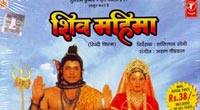
Dayavan Full HD Movie Download

Veera Madakari (Hindi) Full HD Movie Download
.jpg)
Maidan-E-Jung Full HD Movie Download

Film Hi Film Full HD Movie Download
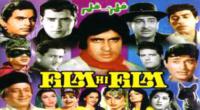
Kismat Konnection Full HD Movie Download

Sarphira Full HD Movie Download

Kali Ghata (1980) Full HD Movie Download
.jpg)
Thirumalai Full HD Movie Download

Aji Bas Shukriya Full HD Movie Download

Samantar Full HD Movie Download

Rojavanam Full HD Movie Download
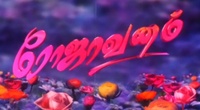
Daya Nayak- License To Kill Full HD Movie Download

Anbai Theadi Full HD Movie Download

Khaidi Kalidasu Full HD Movie Download

Lakshami Narasima Full HD Movie Download
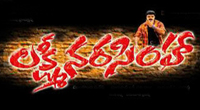
Muddula Koduku Full HD Movie Download

Rajakumari Full HD Movie Download
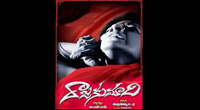
Baata Sari Full HD Movie Download
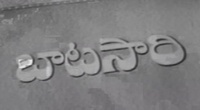
Band Baaja Baaraat Full HD Movie Download
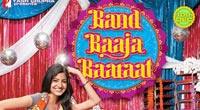
Maine Gandhi Ko Nahin Mara Full HD Movie Download
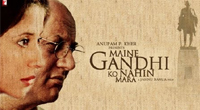
Download latest Movie from bollywood
- 1> baaghi 3
- 2> THE SKY IS PINK MOVIE FULL STORY AND REVIEW
- 3> Luka Chuppi
- 4> TO ALL THE BOYS I’VE LOVED BEFORE
- 5> Kabir Singh
- 6> Street Dancer 3D
- 7> Simmba
- 8> Gone Girl
- 9> The Girl Who Lived
- 10> Ludo
- 11> DILWALE DULHANIA LE JAYENGE
- 12> GUILTY
- 13> The Godfather
- 14> Adventures of Rusty
- 15> Sooryavanshi
- 16> Satyameva Jayate 2
- 17> Thappad
- 18> Bhool Bhulaiyaa 2
- 19> KGFChapter 2
- 20> Mardaani 2
- 21> Pinjar
- 22> Shivaji maharaj
- 23> Ek Villian 2
- 24> Hungama 2
- 25> Divergent
- 26> Mumbai Saga
- 27> The Internship
- 28> HIT (telugu)
- 29> Panga
- 30> The perfect date
- 31> 16 December
- 32> Gopala Gopala (Telugu)
- 33> Brahmastra
- 34> Gangubai Kathiawadi
- 35> Manmadhudu
- 36> Nenu local
- 37> Mahanati
- 38> Shatamanam bavathi
- 39> Lagaan
- 40> After
- 41> MOM
- 42> Shamshera
- 43> Raguvaran BTech
- 44> Khakee
- 45> The villain
- 46> OM
- 47> Mr. perfect
- 48> Bueatifull mind
- 49> Hichki
- 50> Gabbar Singh
- 51> Jogi
- 52> Before Sunrise
- 53> Before Sunset
- 54> Before Midnight
- 55> The Big Bull
- 56> Top Gun: Maverick
- 57> The Purge
- 58> The Sky is Pink
- 59> Laxmmi Bomb
- 60> Sadak 2
- 61> Sufna
- 62> Prithviraj
- 63> PK
- 64> Coolie No 1(2020)
- 65> Black Widow
- 66> Dear Zindagi
- 67> Dil Bechara
- 68> PHIR HERA PHERI
- 69> WAR
- 70> Dostana
- 71> RRR: Roudram Ranam Rudhiram
- 72> Maidan
- 73> Dabbang 3
- 74> Chhalaang
- 75> life as we know it
- 76> SherShaah
- 77> Sandeep Aur Pinky Faraar
- 78> Event Horizon
- 79> 83
- 80> Radhe: Your Most Wanted Bhai
- 81> Gunjan Saxena: The Kargil Girl
- 82> Mr India
- 83> Vivah
- 84> Anokha Bandhan
- 85> Ghost
- 86> Bhoot: Part One - The Haunted Ship
- 87> Haseen Dilruba
- 88> Laal Singh Chaddha
- 89> Qismat
- 90> Rajput
- 91> Drive
- 92> Dil Chahta Hai
- 93> Dil Ki Baazi
- 94> Dil Ka Rishta
- 95> Teesri Manzil
- 96> Dil
- 97> Love Aaj Kal
- 98> Khaali Peeli
- 99> Bunty Aur Babli 2
- 100> Atrangi Re
- 101> Gulabo Sitabo
- 102> Jodi
- 103> Suraj Pe Mangal Bhari
- 104> Deewana
- 105> Attack
- 106> Sardar Udham Singh
- 107> Toofan
- 108> THE LOVEBIRDS
- 109> Jersey
- 110> Ginny Weds Sunny
- 111> Thalaivi
- 112> Shiddat
- 113> Angels vs Zombies
- 114> Koi Mil Gya
- 115> Thank God
- 116> Bhuj: The Pride of India
- 117> Hum Aapke Hain Kaun
- 118> The Platform
- 119> Bird Box
- 120> Roohi Afzana
- 121> Torbaaz
- 122> Nikamma
- 123> World War Z
- 124> Extraction
- 125> Train to Busan
- 126> Life of Pi
- 127> SHAADI MEIN JROOR AANA
- 128> Himmat Aur Mehnat
- 129> To All The Boys: P.S. I Still Love You
- 130> Mimi
- 131> Good Newwz
- 132> Shubh Mangal Zyada Saavdhan
- 133> Raabta
- 134> Harry Potter and the Philosopher's Stone
- 135> Harry Potter and the Chamber of Secrets
- 136> Chhapaak
- 137> War of the Worlds
- 138> Harry Potter and the Prisoner of Azkaban
- 139> Harry Potter and the Goblet of Fire
- 140> MURDER MYSTERY
- 141> Shakuntala Devi
- 142> Bachchan Pandey
- 143> Jayeshbhai Jordar
- 144> Sheer Qorma
- 145> Saina
- 146> 'O' Pushpa I hate tears
- 147> Kedarnath
- 148> MS Dhoni The Untold Story
- 149> Chhichhore
- 150> Badhaai Ho
- 151> Unstoppable
- 152> Oz the Great And Powerful
- 153> The Girl on the Train
- 154> Haathi Mere Saathi 2020
- 155> The Conjuring: The Devil Made Me Do It
- 156> Gandhi Se Pehle Gandhi
- 157> The Song of Scorpions
- 158> Srimanthudu
- 159> Hello Guru Prema Kosame
- 160> Beauty and The Beast
- 161> Black Panther
- 162> Charlie and the Chocolate Factory
- 163> Bole Chudiyan
- 164> Fidaa
- 165> Duvvada Jagannadham
- 166> Bruce Lee: The Fighter
- 167> Hyper
- 168> Yaara
- 169> Red (2020)
- 170> Shivam
- 171> That Is Mahalakshmi
- 172> Nishabdham
- 173> Aashram 2020 web series
- 174> Laxmii
- 175> Mismatched
- 176> STUDENT OF THE YEAR 2
- 177> NAIL POLISH
- 178> Ramprasad Ki Tehrvi
- 179> KAAGAZ
- 180> 12 o Clock
- 181> The Power
- 182> bolo hau
- 183> Tribhanga
- 184> JAMUN
- 185> Madam Chief Minister
- 186> Maasaab
- 187> Aadhaar
- 188> Tanhaji
- 189> Bhaagi 3
- 190> Bhootnath
- 191> MALANG
- 192> Jai Mummy Di
- 193> Haathi Mere Saathi 2021
- 194> Shakeela
- 195> Unpaused
- 196> Annayya
- 197> Vamsoddharakudu
- 198> Mrugaraju
- 199> Narasimha Naidu
- 200> Sankranti
- 201> Manasu Maata Vinadhu
- 202> Anjaane
- 203> Apaharan
- 204> Bachke Rehna Re Baba
- 205> Bewafaa
- 206> Roohi
- 207> Radhe
- 208> Zindagi Khoobsoorat Hai
- 209> Yeh Mohabbat Hai
- 210> Yeh Kya Ho Raha Hai?
- 211> The Tomorrow War
- 212> DehradunDiary
- 213> Meri Shaadi Karaoo
- 214> Matruu Ki Bijlee Ka Mandola
- 215> No One Killed Jesica
- 216> Aag Ka Goola
- 217> Eight Million Dollars
- 218> Three Hundred
- 219> Cats and Dog
- 220> Decoy
- 221> Gold Rush
- 222> You Have Got Mail
- 223> Final Destination three
- 224> Tofan
- 225> Jungle


